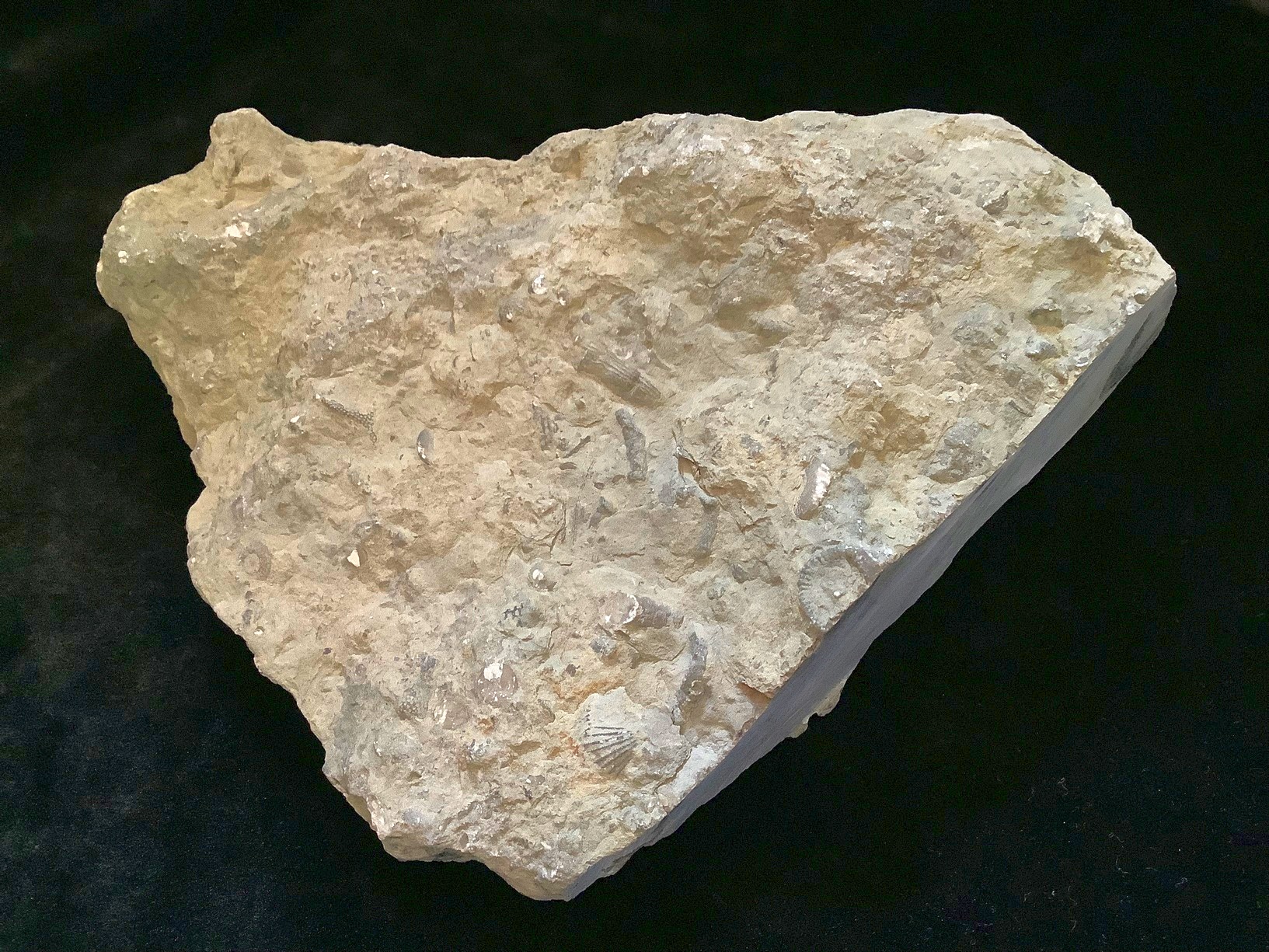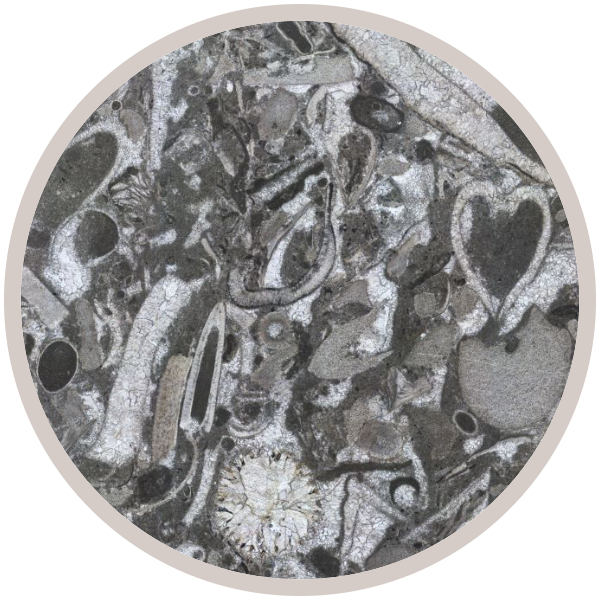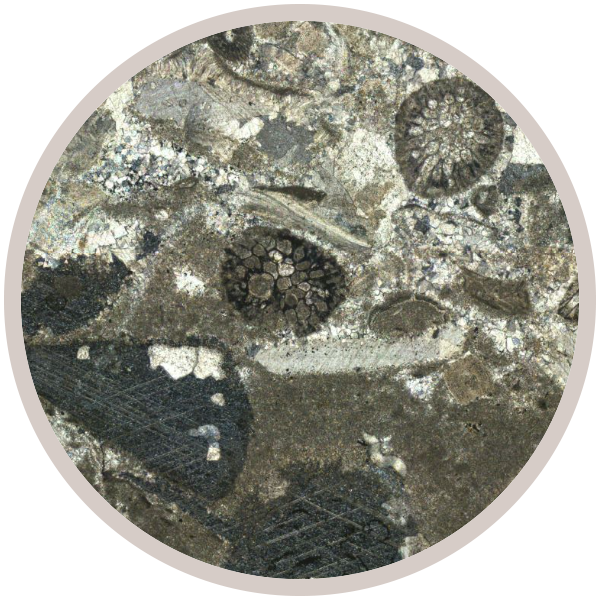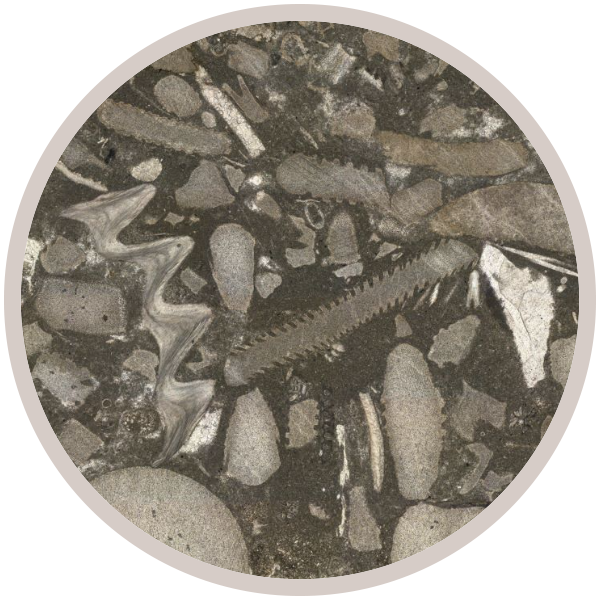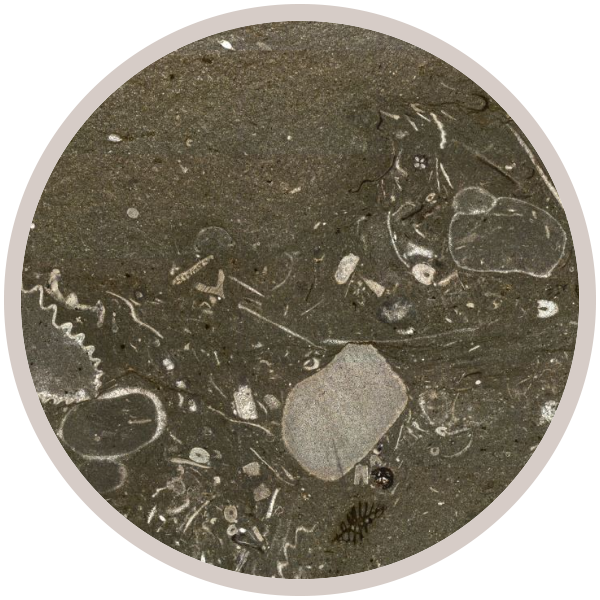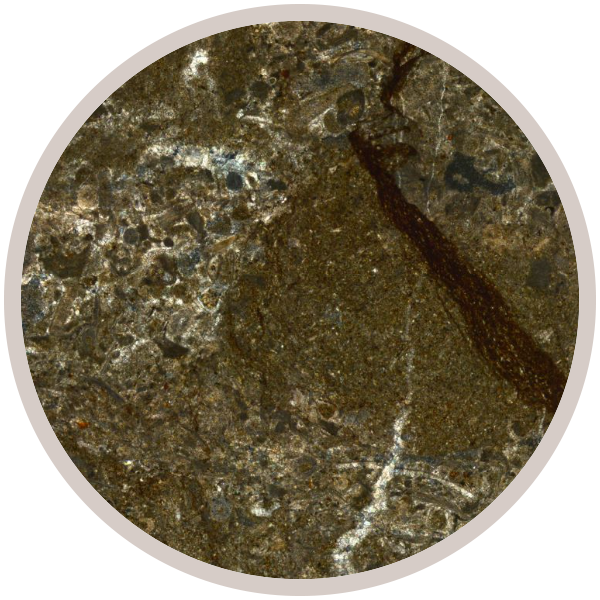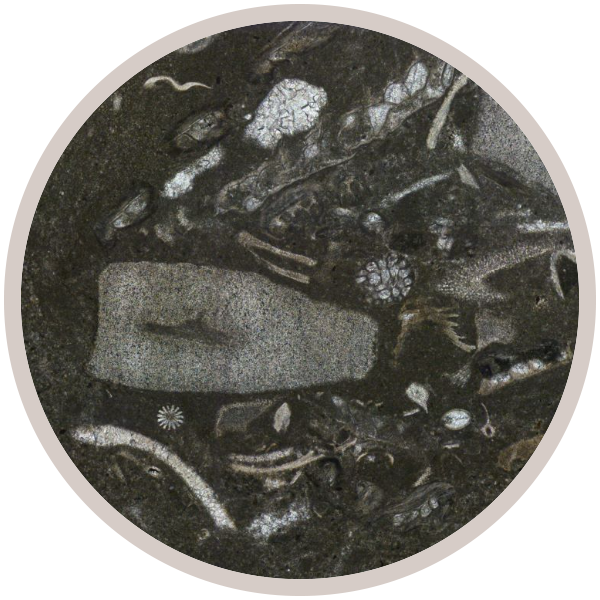
Fact sheet
This sample is a limestone of Silurian (Wenlock) age, crammed with fossils embedded in fine-grained micrite (microscopic particles of recrystallized lime mud), which appears a murky brown in thin section. This would be classified as a packed biomicrite.
The limestone was laid down in a shallow tropical sea south of the equator around 428 million years ago. The area of Wren's Nest featured small coral reefs teeming with life, separated by shallow banks and troughs of lime mud.
The limestone reefs were home to compound and solitary corals, bryozoans, crinoids, brachiopods, gastropods, cephalopods and trilobites. In this thin section, fragments of crinoid stem, fibrous and ridged brachiopod shells, corals and bryozoans (patches of meshwork with round holes). A tiny section through a sea urchin spine can be seen at (12.3, 3.8), while the pale brown ring at (1.7, 7.5) is a similar cross-section through a spine from a brachiopod.
This sample was collected by Daisy, a student from King Edward's School, Stourbridge, as part of the 'Macro to Micro' project.
This Collection showcases the geodiversity of a classic geological site: the Wren's Nest National Nature Reserve in the West Midlands.
As well as displaying thin section and hand specimen views along with information setting them in the context of their landscapes, we also include perspectives and creative responses to the geological heritage of the sites from the local community.
| Explore the stories of the rock layers at Saltwells and Wren's Nest NNRs, designed by students at King Edward VI School, Stourbridge: |
This Collection was made possible by funding awarded to the 'Macro to Micro' project by the Natural Environment Research Council (NERC) under their 'Growing Roots' scheme.
